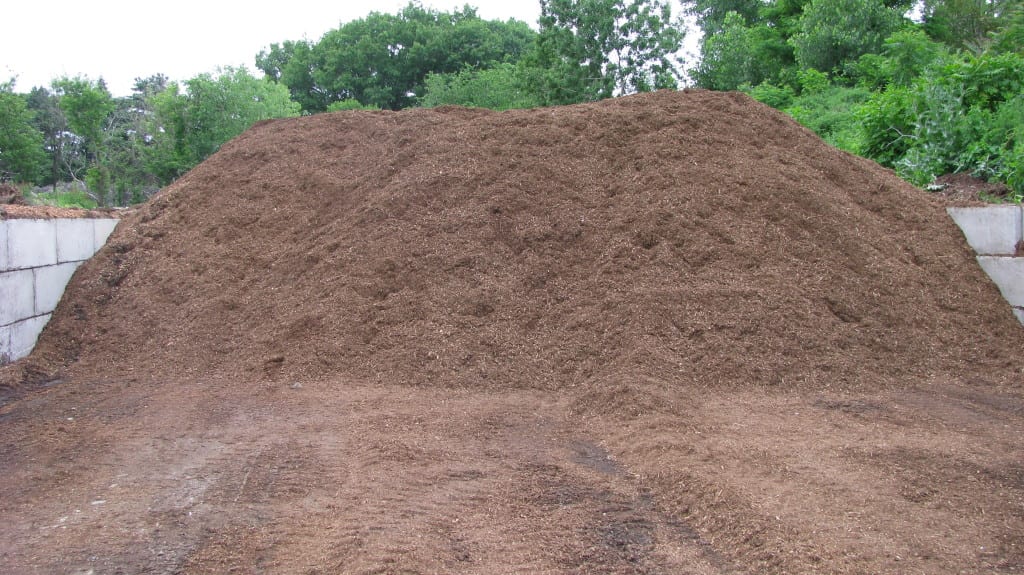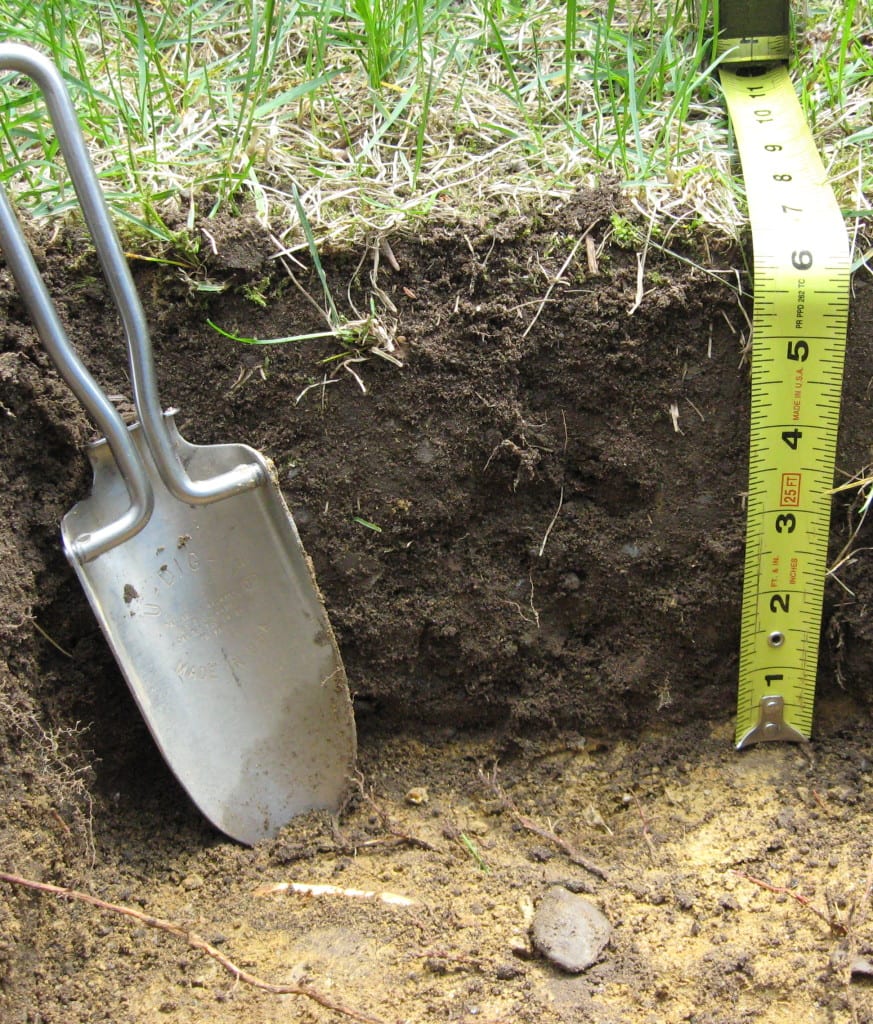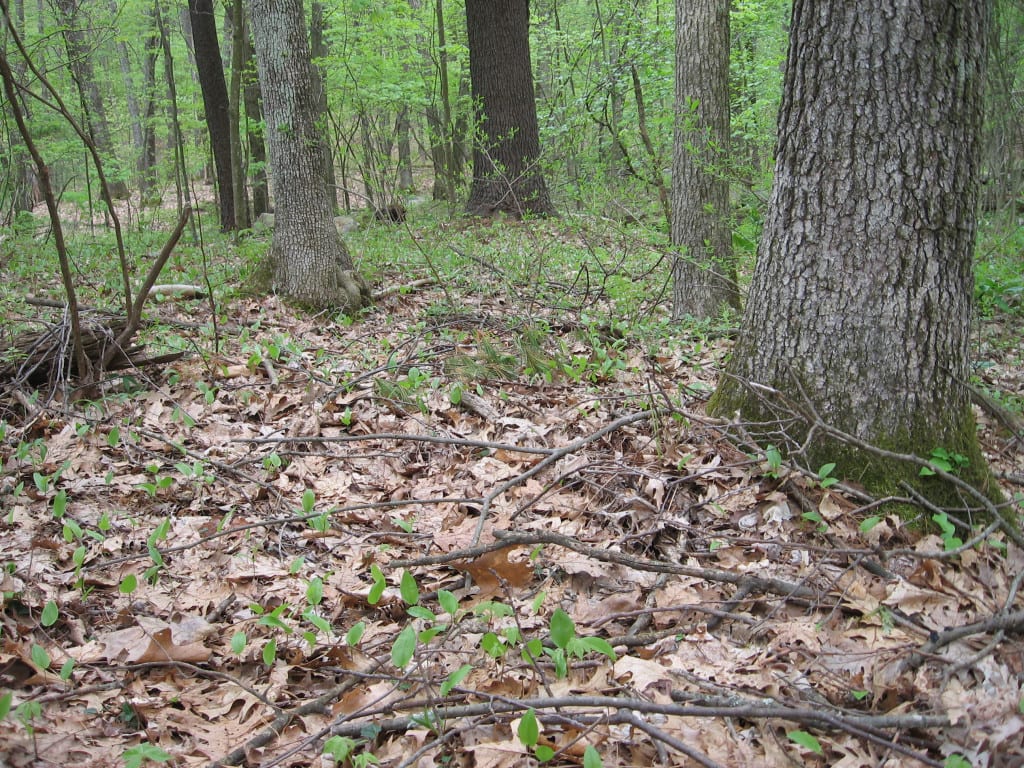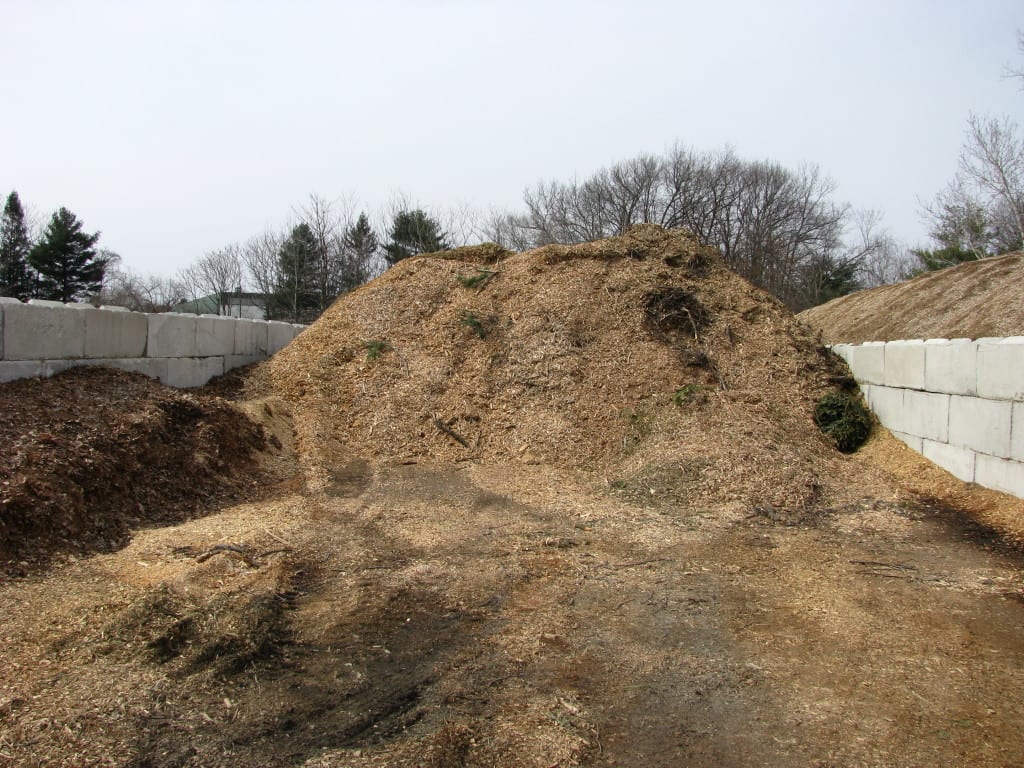by David Ropes
What more can be said about the benefits of mulch in the developed landscape? In her wonderful 2007 article “Impacts of Mulches on Landscape Plants and the Environment – A Review,” Dr. Linda Chalker-Scott from the University of Washington lays it all out, citing relevant data from 145 different sources to validate the positive benefits (and debunk some of the traditional consumer concerns) about organic mulch products. But this is a story about a particular kind of mulch, with unique qualities that set it apart from other mulches.

Although it looks similar to other mulch products, this mulch combines components that build soil structure and fertility.
For most of my career as a practicing arborist here in New England, mulch has meant the shredded bark of coniferous trees – primarily pine and hemlock. For most consumers, this is still the case, although the use of dyed wood mulch is rapidly becoming the product of choice for many homeowners. While there is nothing “bad” about these mulches (beyond the questionable sources and aesthetics of the dyed products), there is nothing particularly great about them either. So, what exactly, is lacking in these products?
Discovering RCW Benefits
Around 2000, our company was made aware of a research paper out of Laval University in Quebec, Canada. In the mid-1970s, a group from the Department of Wood and Forestry Science was looking into ways to utilize the leftover slash from logging operations. The material that they began researching became known as Ramial Chipped Wood (RCW), a material that by their definition contained primarily branch wood, from limbs that were less than 7cm (2¾”) in diameter, preferably from deciduous trees. Through a variety of research conducted over a period of 20 years, they and others discovered that this material provided a unique combination of qualities that were especially useful at building soil structure and fertility:
- It contains a high quantity of soluble or little-polymerized lignin, which provides a base for soil aggregation and the formation of humus.
- It promotes the growth of healthy fungi, which become a food source for beneficial fungivores, crucial to the nutrient cycling process.

Using a mulch that incorporates organic material that includes ramial chipped wood helps to develop shallow topsoil.
One of the critical differences between RCW and other sources of organic matter is its ability to restore a long term, self-sustaining nutrient cycling mechanism within the soil system. The lignin structure in deciduous trees encourages the formation of white rot fungi, and long-life humus, critical for long term soil structure and fertility. By contrast, coniferous lignin sources encourage the growth of brown rot fungi. Brown rot fungi produce phenols that can actually inhibit the growth of many beneficial soil microbes. Because of this, the researchers recommended limiting the use of coniferous RCW sources to 20% or less. Chipped wood product from larger branches or stem wood is also less desirable, as the Carbon/Nitrogen ratio increases dramatically, and the concentration of essential nutrients (N,P,K,Ca,MG) is much lower in the “dead” heartwood of larger limbs and stems.
Developing the Right Recipe
Of course, most of the research conducted used relatively fresh sources of RCW, specifically to regenerate disturbed or depleted soils. The Laval University researchers felt that once the material ages, it becomes a form of compost and is less effective at cultivating the fungal components that are so effective at building soil structure. Now I consider myself a farmer, not a scientist, and like many practitioners I have always had a general sense that “organic matter is good” because it increases water holding capacity and provides a nutrient source for our sandy New England soils. The information provided by this research summary does a great job of taking us a bit deeper, and explains something that has always puzzled me. How come our New England hills of sand, gravel and stone are all covered with a thick blanket of healthy trees? The answer, of course, is that trees eat themselves.

The forest floor provides the components of a perfect mulch – leaves and small branches from deciduous trees and shrubs.
So, with this new insight, Rolf Briggs, the owner of Tree Specialists, began to think about the huge volume of wood chips being generated on a daily basis. Might this material offer some of the benefits of RCW to the residential, ornamental landscape? And might that turn a burdensome waste product into a saleable commodity? Why yes, yes indeed, it would!
The product that we now call our Forest Floor Mulch Mix™ is obviously different than the RCW product. It has to be, for practical and aesthetic reasons:
- It is aged and partially composted for a full year.
- It is augmented with additional dead leaf litter.
- The blend is then re-ground, to produce a dark brown, fine-textured product that is familiar and desirable to the average consumer.
But there are important distinctions between our product and bark mulch, or even other recycled woodchip mulches:
- As a company, we do mostly structural pruning, and relatively few large removals. This means the bulk of our woody material comes from branch wood, with a high percentage of deciduous species – offering the increased nutrient content of the RCW material.
- The added leaf content and the aging process bring our C/N ratio down and reduce the degree to which the mulch affects Nitrogen availability in the soil.
- Coniferous bark is full of polymerized lignin, suberin, and waxy compounds that resist decay and lead to mulch build-up. In contrast, mulch with mostly RCW material breaks down more readily, releasing nutrients back into the soil.
After 15 years of using this product on our client’s properties, and selling thousands of cubic yards to landscape contractors in our area, the results have been overwhelmingly positive. More worms, healthier plants, and much less of a tendency to build-up. For those folks working in alluvial, “bottomland” soils, the differences may not be as noticeable, but for those of us working in the thin, bony soils common to much of New England, we can use all of the help we can get!
About the Author
Dave Ropes is a graduate of the UMASS Urban Forestry program, and a Certified Arborist with Tree Specialists, Inc. in Holliston, MA.
Each author appearing herein retains original copyright. Right to reproduce or disseminate all material herein, including to Columbia University Library’s CAUSEWAY Project, is otherwise reserved by ELA. Please contact ELA for permission to reprint.
Mention of products is not intended to constitute endorsement. Opinions expressed in this newsletter article do not necessarily represent those of ELA’s directors, staff, or members.


